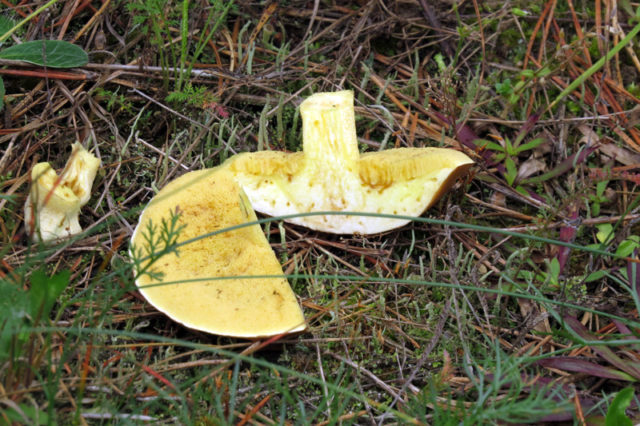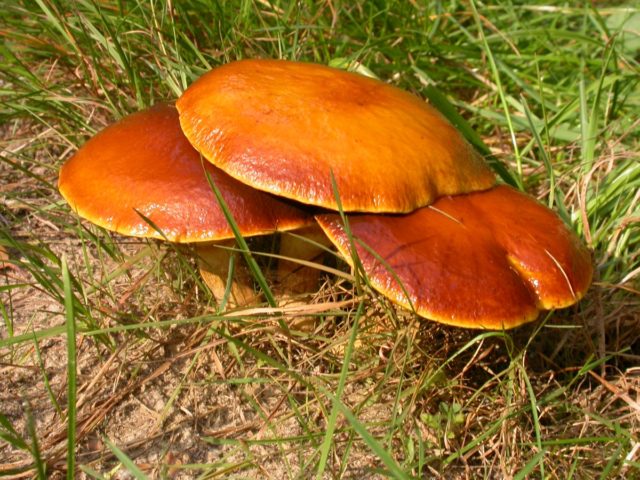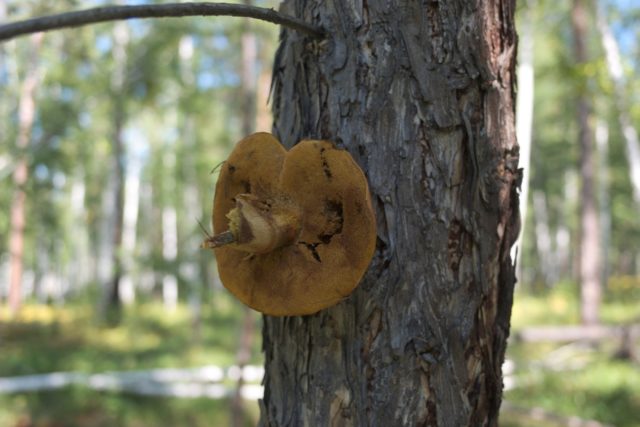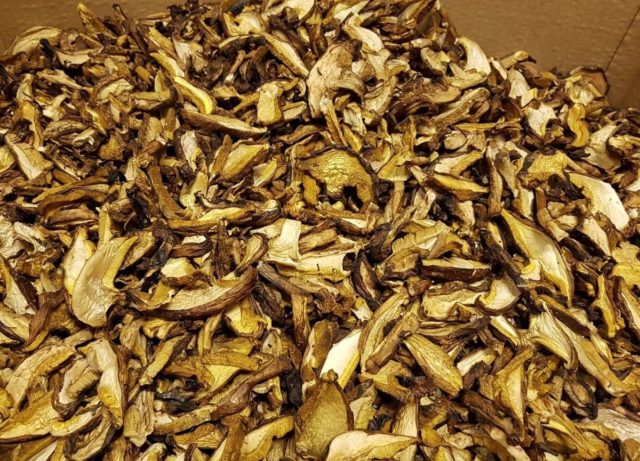Content
Boletus mushrooms are included in recipes for many dishes of Russian cuisine. They are widespread and loved by mushroom pickers, but quite often wormy ones come across among the collected specimens. There is nothing terrible in this, especially if the lesion is small. You can eat wormy boletus, but before preparing them, you need to carry out some preparatory measures.
Why do worms appear in oil
Strictly speaking, it is not worms that settle inside the fungus, but the larvae of various flying insects. They emerge from eggs that are laid in the fruiting bodies of female mosquitoes and flies. The growing larvae begin to feed on the pulp of the mushroom, gradually gnawing passages in it, which are clearly visible on the cut. In this case, the larvae can spread both from above and from below, gradually moving from the cap to the stem, or vice versa, since some of the insects lay eggs in the soil. This process occurs not only with oil. Almost all mushrooms that are edible or conditionally edible, to one degree or another, may turn out to be wormy, that is, infected with the larvae of certain insects.
Boletus growing in open areas are perfectly visible and therefore a very accessible food base, so these mushrooms are almost more at risk of becoming a food source for insect larvae than others. The situation is aggravated if the weather is dry and hot. Mushrooms grow worse at such a time, but insects, on the contrary, become much more numerous. At such a time, the overwhelming majority of boletus, even the youngest, can turn out to be wormy. In damp weather, on the contrary, more fungi grow, and insects practically do not fly, so wormy boletus during such periods are much less common.
In addition to the larvae of flying insects, boletus can be affected by slugs - invertebrate gastropods that resemble snails without a shell. This usually happens in wet weather. Slugs also feed on the pulp of mushrooms, often gnawing through the caps, but they do not climb deep into the fruiting body and are always outside. These invertebrates do not pose any danger. You just need to shake them off, after which the mushrooms can be processed.
Sometimes in oil you can also find a wireworm well known to many gardeners - the larva of the click beetle. It is yellowish in color, tough to the touch, is quite large, its passages inside the fruiting body of the fungus are a real tunnel. The wireworm usually lives in the soil, feeding on various roots, but it often attacks fungi as well. This larva is not poisonous, and after its removal, forest gifts can be safely used for further processing.
Is it possible to eat wormy boletus
Butterlets belong to edible mushrooms of the II category of nutritional value. This suggests that they taste good and are a fairly good source of protein.
With the appearance of an insect larva inside the fruiting body, the mushroom will not cease to be edible, it only loses its nutritional value. The larvae themselves and their waste products are not poisonous and do not have any negative effect on the taste or smell of butter oils. Everyone happened to accidentally swallow a mosquito or midge in childhood, and this did not lead to any negative consequences. The situation is absolutely the same here. Therefore, it is rather a question of aesthetics and the advisability of eating wormy mushrooms in the presence of healthy ones.
When deciding for yourself whether or not to take wormy boletus, you need to decide in advance what they will be used for. Butterlets are excellently canned, they can be salted and pickled. However, for this purpose, it is still better to choose whole caps of young mushrooms that are not affected by worms, since in finished form they should look as attractive as possible. It is better to use wormy butter in dishes that require additional chopping of mushrooms and their good heat treatment. In this case, all negative consequences will be minimized, an accidentally remaining worm will be difficult to identify in a homogeneous mass of the finished dish. And deep heat treatment is guaranteed to destroy all biological traces of its presence inside the fruiting body of the fungus.
How to remove worms from butter mushrooms
Butterlets very often grow in large colonies, dozens of specimens can be in one place. In such cases, the best way to avoid the wormy mushroom problem is not to take everything. With a sufficient amount of oil, sorting and culling can be done right on the spot, in the forest. In this case, it is advisable to check each copy by cutting its cap in half. If, when cut, a lot of worm moves are found, and the structure of the pulp of the fruiting body itself rather resembles old cotton wool, then there is no point in taking such a mushroom home for processing. It is better to leave such rotten things in the forest right away.
At home, before starting up mushrooms for processing, you need to check them again for the presence of wormy places. Small, localized lesions can be simply cut out with a knife. If several worm moves are visible on the cut of the cap, and the structure of the cap itself has not lost its density, then such mushrooms can be soaked for several hours in cold salt water. The worms will definitely leave their shelters and float to the surface, after which it will not be difficult to collect them. After this procedure, mushrooms can be processed.
The brown film covering the cap of the oiler must be removed whenever you use the mushrooms, otherwise it will give the finished dish a dark color and bitter taste. You need to remove it before soaking the mushroom in water. A wet oiler is very slippery and will be very difficult to hold in your hands. For cleaning oils, it is better to put rubber gloves on your hands, since the film that is removed from the surface of the cap contains a coloring pigment. Hand protection will turn dark brown if not worn. This paint is quite persistent and does not wash off for several days.
What to do with wormy oil
After sorting and removing the worms, the boletus can be used for all the same purposes as ordinary ones. There are quite a few recipes for cooking various dishes with these mushrooms. Here are some of the names of the dishes you can make with them.
- Zrazy with egg and mushrooms.
- Fried butter in sour cream.
- Baked potatoes with mushrooms.
- Mushroom soup.
- Stewed butter with potatoes.
- Fried butter with onions.
- Butter with chicken.
These mushrooms are good as an independent dish, they are often stewed or fried with potatoes in various variations, they are used as a filling for pies. Numerous mushroom snacks, sauce, mushroom caviar can be prepared from them. You can also use butter for making mushroom soup.However, in this case, it is better to strain the broth, since a worm that accidentally floats on the plate can discourage appetite for a long time.
After removing the worms, the oil can be dried on a wire rack or in the oven. Dried, these mushrooms can be stored for up to one and a half years. Boiled boletus is often frozen and stored as a semi-finished product, using them later for frying, stewing or making mushroom soup.
Video about some methods of cooking butter:
Conclusion
It is possible to eat wormy boletus, but this must be done after their deep processing, which necessarily includes heat treatment. This is absolutely necessary in order to minimize the risk of introducing a parasite or pathogen into the body. If there are a lot of mushrooms growing, and you can completely do without collecting worms, then this should certainly be used. There is no need to be greedy and strive to gain as much as possible. Why carry an extra load if you still have to throw half of it at home during processing.













